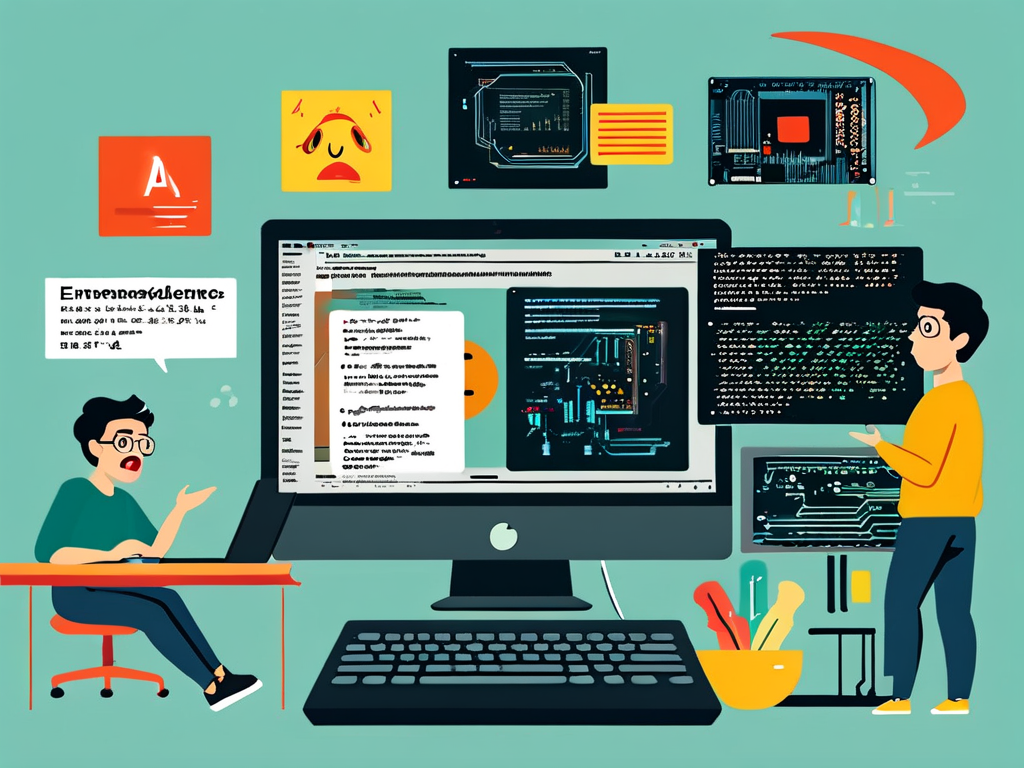Embarking on the journey of embedded systems development often raises a critical question: Is this field truly difficult for newcomers? While the answer varies based on individual backgrounds, the challenges and rewards of embedded development create a unique learning landscape that demands both persistence and strategic planning.

The Multidisciplinary Challenge
Embedded development sits at the intersection of hardware and software, requiring familiarity with electronic components, microcontroller architectures, and low-level programming. Unlike pure software engineering, developers must consider physical constraints like memory limitations (e.g., working with 8KB RAM devices) and real-time processing requirements. A simple "Hello World" program in this domain might involve configuring GPIO pins rather than printing text:
#include <avr/io.h>
int main() {
DDRB |= (1 << DDB5); // Set PB5 as output
while(1) {
PORTB ^= (1 << PORTB5); // Toggle LED
_delay_ms(500);
}
}
This code snippet for an AVR microcontroller illustrates how basic tasks require hardware-specific knowledge. Newcomers often struggle with concepts like register manipulation and clock cycle management, which are foreign to developers accustomed to high-level languages.
The Toolchain Complexity
Modern embedded ecosystems present a double-edged sword. While platforms like Arduino simplify initial experiments, professional development demands mastery of toolchains involving compilers (e.g., ARM GCC), debug probes (J-Link, ST-Link), and real-time operating systems (FreeRTOS, Zephyr). Setting up a proper build environment alone can overwhelm beginners, as shown by this common Makefile structure:
CC = arm-none-eabi-gcc
CFLAGS = -mcpu=cortex-m4 -mthumb -Wall
build: main.c
$(CC) $(CFLAGS) -o firmware.elf main.c
The fragmentation across microcontroller vendors (STMicroelectronics, NXP, Microchip) further complicates learning, as each manufacturer provides unique libraries and development suites.
Learning Strategies That Work
Successful learners often follow a "hardware-first" approach:
- Start with basic electronics fundamentals (Ohm's Law, digital logic)
- Master a specific microcontroller family (e.g., STM32 or ESP32)
- Progress from bare-metal programming to RTOS implementations
- Implement communication protocols (I2C, SPI) through practical projects
Open-source platforms have democratized access to learning resources. Websites like Hackaday.io host active communities where developers share PCB designs and firmware code, while affordable development boards (under $10) lower the barrier to hands-on practice.
The Debugging Paradigm Shift
Embedded debugging requires different skills compared to software troubleshooting. Developers must use oscilloscopes to analyze signal integrity and logic analyzers to decode serial communications. A typical UART debugging session might involve checking both code logic and physical connections – a dual-layer problem-solving approach that initially frustrates many learners.
Career Perspective
Despite the steep learning curve, embedded skills remain in high demand across industries like IoT, automotive, and industrial automation. The global embedded systems market, projected to reach $137 billion by 2027 (Source: MarketsandMarkets), offers diverse opportunities for specialists who bridge hardware and software domains.
For determined learners, embedded development transforms from a daunting challenge into a rewarding specialization. By combining structured learning with practical experimentation, newcomers can gradually decode the complexities of this field. The key lies in embracing incremental progress – each blinking LED or sensor interface mastered represents a concrete step toward professional competency.









